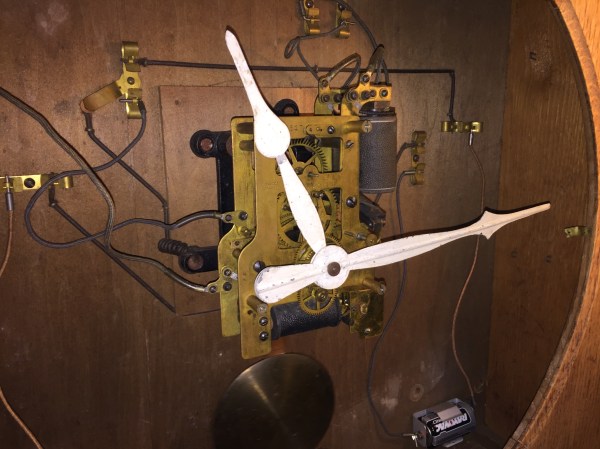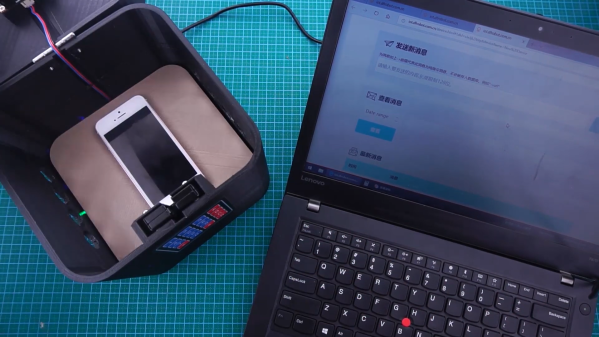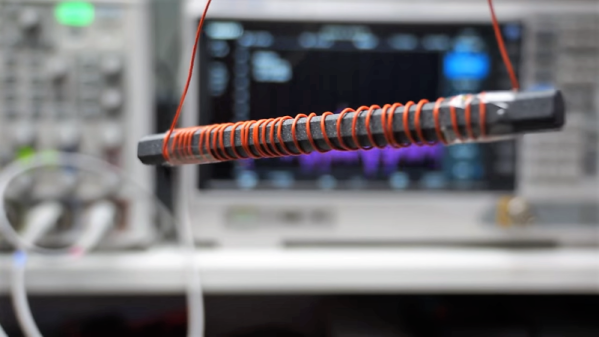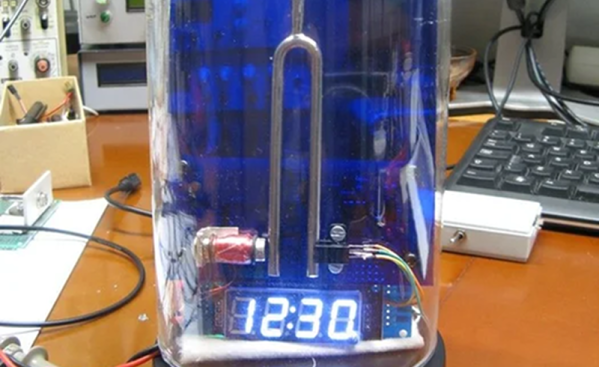As [sjm4306] says, “You can never have too many clocks based on obsolete display technologies.” We couldn’t agree more, and this single-tube VFD clock is one we haven’t seen before.
The vacuum-fluorescent display that [sjm4306] chose to base this clock on is the IV-21, an eight-digit seven-segment display on the smallish side. The tube is Russian surplus from the ’80s, as all such displays seem to be. The main PCB sports an ATMega328, a boost converter to provide the high voltage needed to run the VFD, a real-time clock, and the driver chip for the tube segments. The tube itself lives on a clever riser card that elevates the display above the main PCB and puts it at the proper angle for reading. [sjm4306] designed it to be modular; should you want to user a bigger VFD you need only make a new riser PCB. Figuring out the proper way to space the through-holes in Eagle proved elusive, but he hacked a solution using a spreadsheet to handle the trigonometry and spit out Cartesian coordinates for each hole. Pretty neat. The video below shows the clock assembly and a test.
We really like the look of this clock for some reason – perhaps it’s the quirky nature of the VFD, or the soft teal glow of the digits. We’ve featured plenty of clocks with odd displays before: VFDs large and small, faux-NIMO, de-encapsulated LED “filaments”, and lots and lots of Nixies.
Continue reading “Mini-VFD Clock Floats The Display Above It All”


















